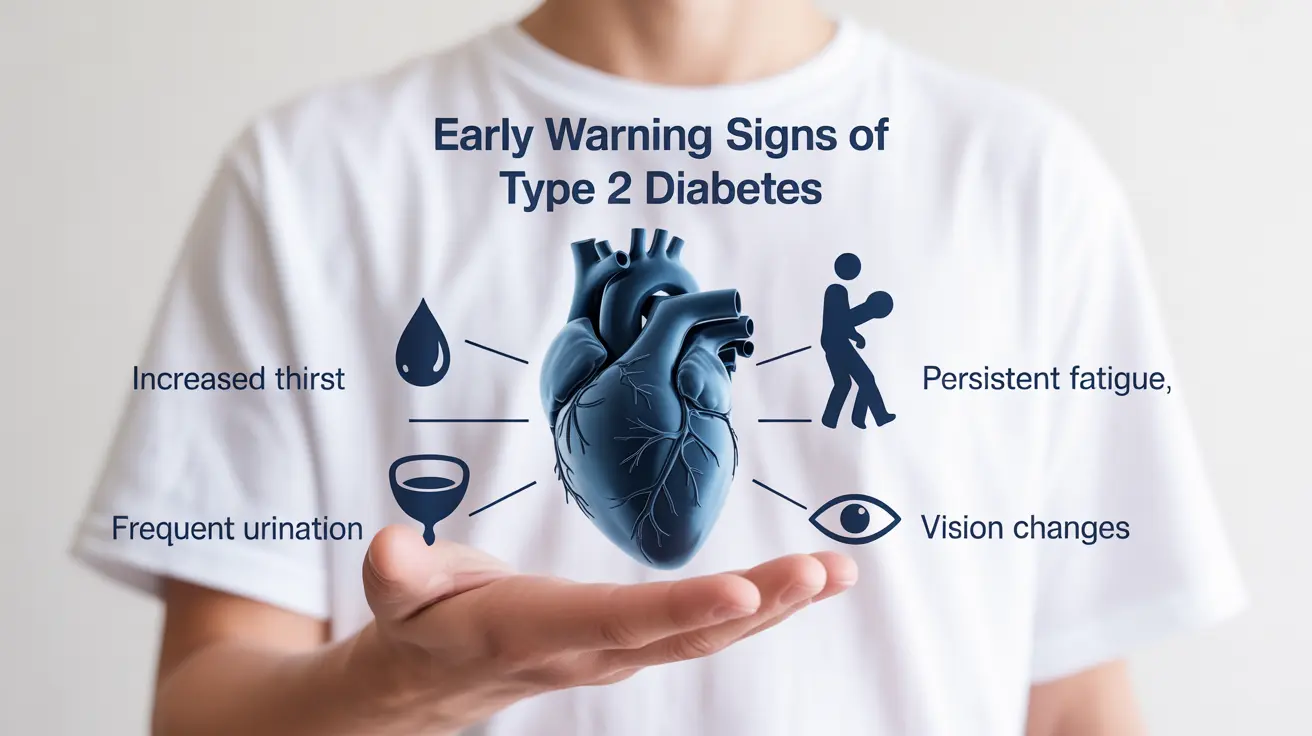Understanding the early warning signs of diabetes is crucial for timely diagnosis and treatment. Type 2 diabetes often develops gradually, and recognizing its symptoms early can help prevent serious complications. This comprehensive guide explores the key warning signs that might indicate you're developing diabetes.
Understanding the Classic Warning Signs
The most common early indicators of diabetes are often related to how your body processes glucose. These symptoms develop when blood sugar levels become elevated, affecting various body systems and functions.
Increased Thirst and Frequent Urination
When blood sugar levels rise, your body tries to eliminate the excess glucose through urination. This increased urination leads to dehydration, triggering intense thirst. If you find yourself drinking and urinating more than usual, especially at night, this could be an early warning sign of diabetes.
Persistent Fatigue and Weakness
When your cells can't effectively use glucose for energy due to insulin resistance or insufficient insulin, you may experience constant tiredness and weakness. This fatigue often persists even with adequate rest and can significantly impact daily activities.
Physical Changes to Watch For
Vision Changes
High blood sugar can affect the tiny blood vessels in your eyes, leading to temporary blurred vision. If left unchecked, these changes can become more serious and potentially permanent. Any unexpected changes in vision warrant immediate medical attention.
Skin-Related Symptoms
Diabetes can manifest through various skin changes, including:
- Dark, velvety patches in skin folds (acanthosis nigricans)
- Slow-healing cuts or wounds
- Frequent infections
- Dry, itchy skin
Unexplained Weight Changes
Despite eating more than usual, some people with developing diabetes experience unexpected weight loss. This occurs because when cells can't absorb glucose properly, the body may start breaking down muscle and fat for energy.
Additional Warning Signs
Changes in Hunger Patterns
Extreme hunger, even after eating, can signal diabetes. This happens because your cells aren't getting the energy they need from food, triggering persistent hunger signals.
Numbness or Tingling
High blood sugar can damage nerves throughout your body, often starting with tingling or numbness in the hands and feet. This condition, known as diabetic neuropathy, typically develops gradually.
When to Seek Medical Attention
If you notice any combination of these warning signs, especially increased thirst, frequent urination, or unexplained fatigue, schedule an appointment with your healthcare provider. Early intervention can prevent or delay serious complications.
Frequently Asked Questions
What are the most common early warning signs of type 2 diabetes to watch for?
The most common early warning signs include increased thirst, frequent urination, unexplained fatigue, blurred vision, and slow-healing wounds. You might also experience increased hunger, unexpected weight loss, and numbness in extremities.
How can frequent urination and increased thirst indicate the onset of diabetes?
When blood sugar levels are high, your kidneys work harder to filter and absorb the excess glucose. When they can't keep up, this excess sugar is excreted into your urine, drawing water with it. This leads to more frequent urination and subsequent increased thirst as your body tries to replenish lost fluids.
Why do people with type 2 diabetes often experience fatigue and blurry vision?
Fatigue occurs because cells can't efficiently use glucose for energy due to insulin resistance. Blurry vision happens when high blood sugar levels cause the lens in your eye to swell, temporarily changing its shape and affecting your ability to focus.
What skin changes are warning signs of diabetes and how are they related to blood sugar levels?
Common diabetes-related skin changes include dark patches in skin folds (acanthosis nigricans), slow-healing wounds, frequent infections, and dry skin. These changes occur because high blood sugar levels can affect blood circulation, nerve function, and the body's healing abilities.
When should someone see a doctor if they notice symptoms like increased hunger or slow-healing wounds?
You should consult a healthcare provider if you experience any combination of diabetes symptoms, particularly if you have increased thirst, frequent urination, or wounds that don't heal within a few weeks. Don't wait for multiple symptoms to appear – early diagnosis and treatment can prevent serious complications.




